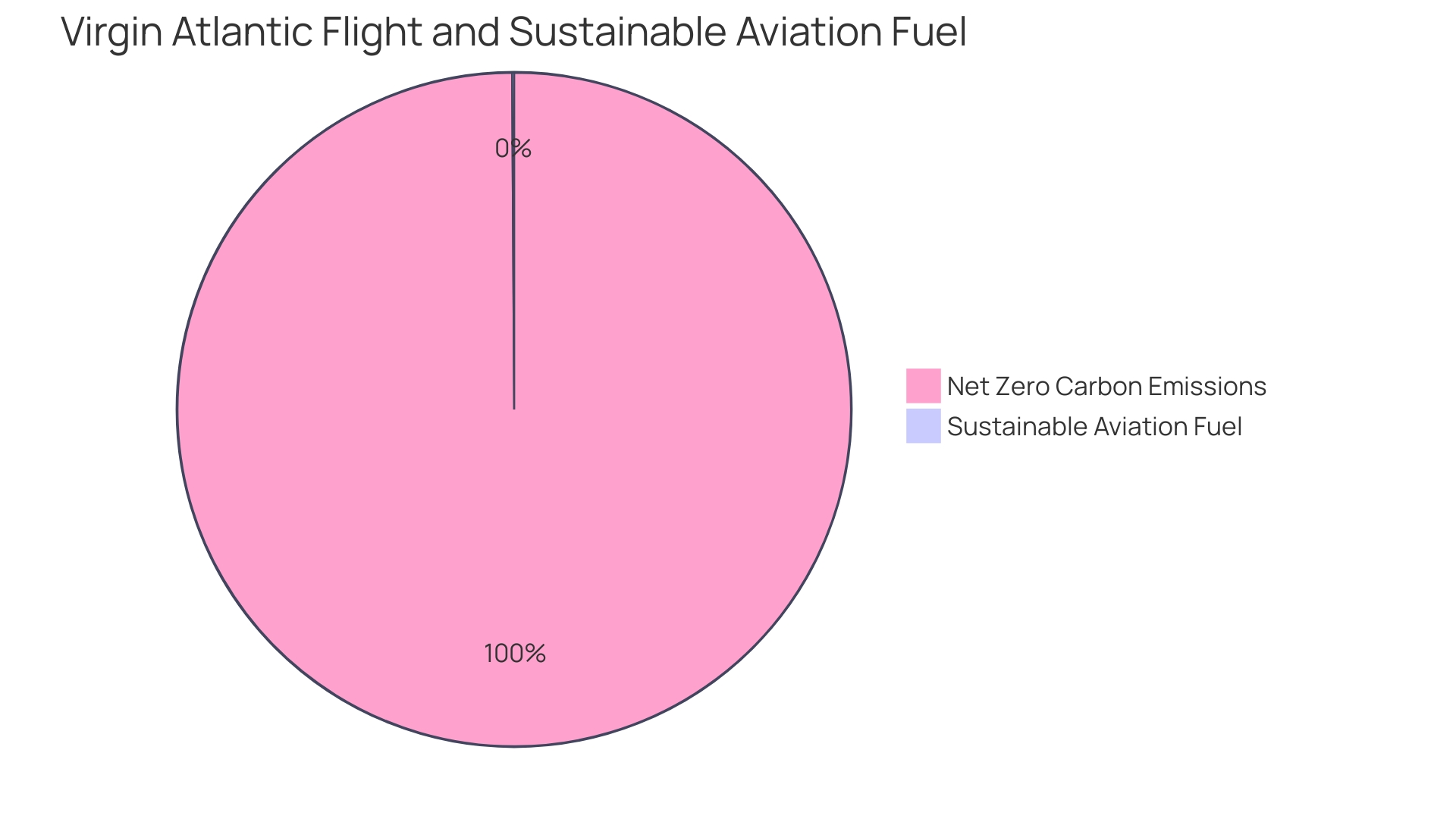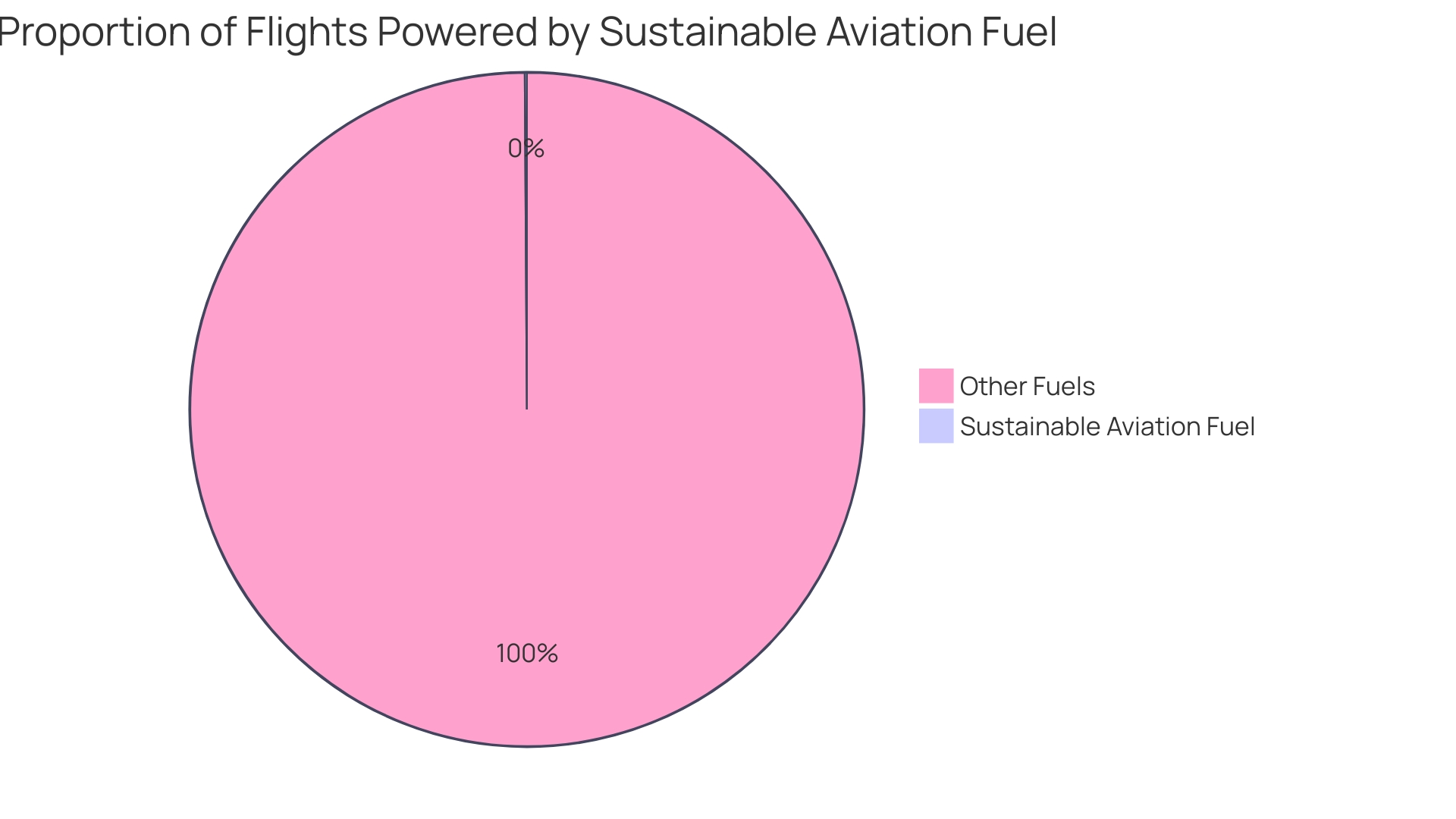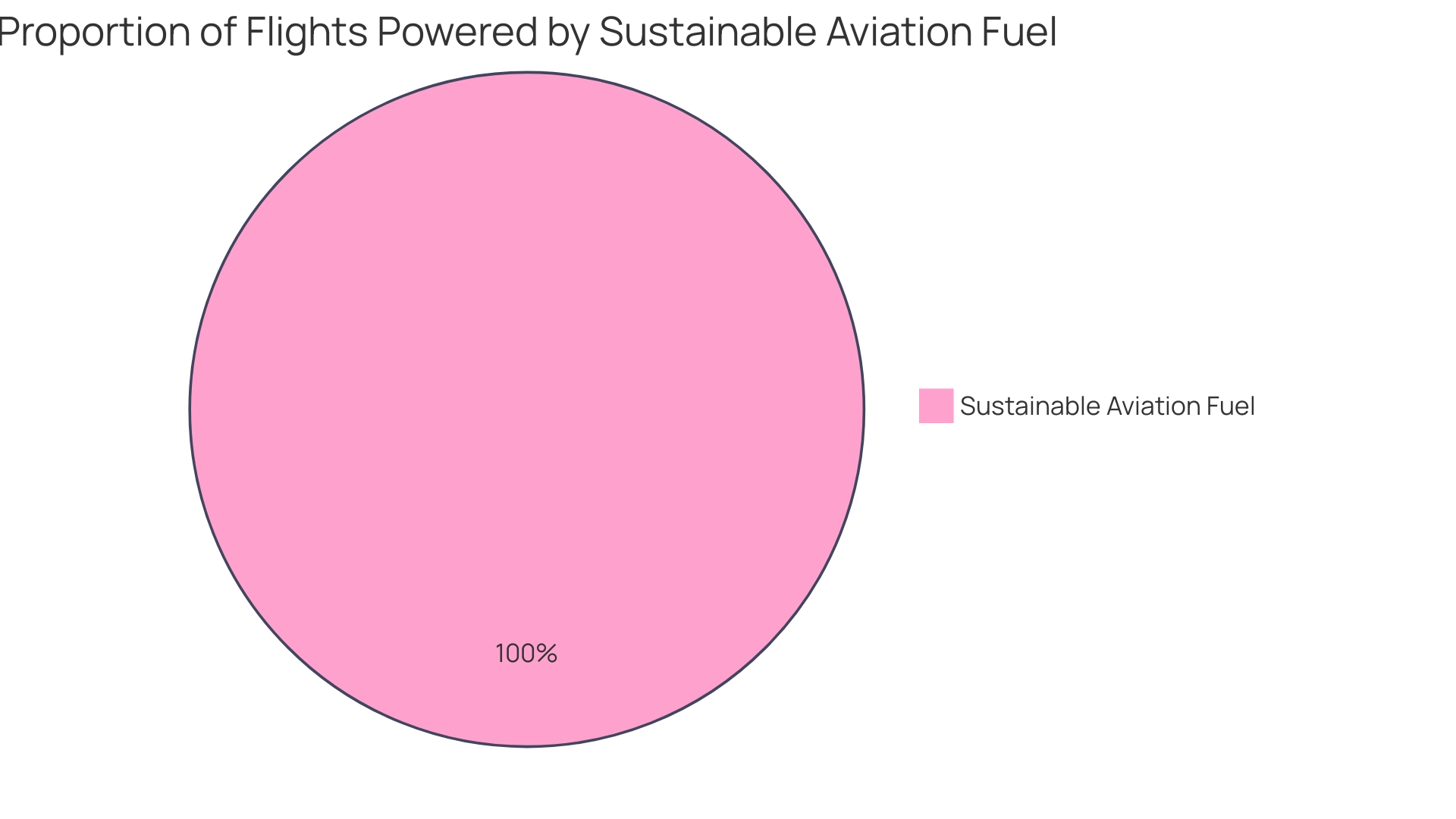Introduction
The landscape of sustainable aviation fuel (SAF) is shaped by a complex regulatory environment and ambitious global targets aimed at mitigating climate change. Recent advancements have been underscored by the European Union's leadership, particularly with the ReFuelEU Aviation initiative, which is part of the broader 'Fit for 55' package. This legislative framework is set to reduce greenhouse gas emissions by 55% by 2030 in comparison to 1990 levels, paving the way for climate neutrality by 2050.
Implementing from January 2024, with certain provisions taking effect in January 2025, the ReFuelEU Aviation regulation is a decisive step towards leveling the playing field for SAF within the aviation sector. The European Commission, alongside EU Member States, has been instrumental in forging this agreement. Their collaborative efforts are also supported by the technical work with the International Civil Aviation Organization (ICAO) to develop a robust reporting methodology, vital for monitoring progress towards these environmental objectives.
Despite these progressive policies, the current use of SAF in commercial aviation remains minimal, with only 0.1% of flights utilizing this alternative fuel source as of November 2023. This underscores the significant gap between policy aspirations and real-world application, emphasizing the need for accelerated adoption and production of SAF to meet the set targets. Understanding these regulatory frameworks and international commitments is essential for industry stakeholders, as they navigate through the transition to SAF.
By keeping abreast of these developments, professionals can better strategize for the integration of SAF into their operations, ensuring alignment with the global trajectory towards sustainable aviation.
Global Aspirational Goals and Regulatory Framework
The scenery of sustainable air travel substance (SAF) is influenced by a intricate regulatory surroundings and ambitious global objectives aimed at lessening climate change. Recent advancements have been underscored by the European Union's leadership, particularly with the ReFuelEU Aviation initiative, which is part of the broader 'Fit for 55' package. This legislative framework is set to reduce greenhouse gas emissions by 55% by 2030 in comparison to 1990 levels, paving the way for climate neutrality by 2050.
Starting in January 2024, with certain provisions coming into force in January 2025, the ReFuelEU regulation is a significant move towards equalizing the opportunities for SAF within the airline industry. The European Commission, alongside EU Member States, has been instrumental in forging this agreement. Their collaborative efforts are also supported by the technical work with the International Civil Aviation Organization (ICAO) to develop a robust reporting methodology, vital for monitoring progress towards these environmental objectives.
Despite these progressive policies, the current use of SAF in commercial flying remains minimal, with only 0.1% of flights utilizing this alternative fuel source as of November 2023. This underscores the significant gap between policy aspirations and real-world application, emphasizing the need for accelerated adoption and production of SAF to meet the set targets.
Understanding these regulatory frameworks and international commitments is essential for industry stakeholders, as they navigate through the transition to SAF. By keeping abreast of these developments, professionals can better strategize for the integration of SAF into their operations, ensuring alignment with the global trajectory towards sustainable aviation.

Types of Feedstocks for SAF Production
Sustainable Aviation Fuel (SAF) utilizes a variety of feedstock options, each with unique benefits and challenges. Biomass, such as agricultural residues or dedicated energy crops, presents a renewable option that can reduce lifecycle greenhouse gas emissions. Waste oils, including used cooking oil, provide a pathway to recycle existing hydrocarbons into valuable energy sources, mitigating the necessity for new fossil fuel extraction. Additionally, technological advancements in carbon capture enable the synthesis of SAF by harvesting atmospheric CO2, which is then combined with hydrogen from renewable sources.
The availability of these feedstocks is critical for the scalability of SAF. For instance, biomass availability may be subject to seasonal fluctuations and regional limitations, while waste oils rely on consistent collection and processing infrastructures. Carbon capture technologies, though promising, require significant energy input and are still in the process of being commercialized.
Each feedstock's environmental impact is assessed through a life-cycle analysis, considering factors such as land use, energy balance, and potential emissions reductions. The use of SAF can lead to a substantial decrease in carbon footprint compared to traditional jet propellant. For instance, a return journey from New York City to London could release approximately 1000 kilograms of carbon dioxide using conventional energy source, a figure that can be substantially decreased with SAF.
Despite the environmental advantages, SAF currently powers only 0.1% of flights, largely due to economic and technical hurdles. The dedication of the air transport sector to safety and efficiency requires that SAF meets stringent standards, ensuring its seamless integration into the current fuel infrastructure without compromising performance. As the sector works towards achieving net-zero carbon emissions, the significance of SAF will grow more crucial, backed by cooperative initiatives like the alliance between Airbus and Neste to reduce carbon footprint in air transport.

SAF Production Pathways
Sustainable Flight Fuel (SAF) is a crucial element in the air travel sector's path towards minimizing its carbon footprint. With the US aviation sector being a significant contributor to transportation emissions and expected to grow, the pressure is on to find viable solutions for decarbonization. SAF emerges as a promising alternative to traditional aviation gasoline, capable of powering existing aircraft without adding more greenhouse gases to the atmosphere. The production of SAF encompasses several pathways and technologies, each with unique challenges and technical considerations.
Hydroprocessing of fats, oils, and greases is a prevalent method where feedstocks are treated with hydrogen to remove oxygen, producing hydrocarbons similar to those in conventional aviation propellant. This pathway is integral to the industry's current SAF production, with its compatibility with existing infrastructure and aircraft engines.
In contrast, the Fischer-Tropsch (FT) process involves converting carbon-containing materials, such as biomass or gasified municipal waste, into liquid substances. The versatility of this method allows for a wide range of feedstocks, making it a valuable option for SAF production. However, it requires complex synthesis and refining processes that can present technical and economic challenges.
In addition, the alcohol-to-jet (ATJ) conversion process is gaining momentum, which converts ethanolâa more easily accessible and less carbon-intensive alcoholâinto aviation propellant. Pioneering research, funded by the United States Department of Energy, focuses on developing catalysts to streamline this conversion, potentially offering a scalable and sustainable pathway for SAF production. A recent project showed commercial readiness by producing jet energy from plant-based materials, indicating a notable advancement in the sustainability efforts of the sector.
The significance of these technologies is emphasized by initiatives like the collaboration between Airbus and Neste, which aim to reduce carbon emissions in air travel and achieve sustainability goals. Additionally, the accomplished transatlantic journey powered by SAF, attained by Virgin Atlantic, signifies a significant achievement for the sector, demonstrating the feasibility of these alternative resources for lengthy flights.
While SAF currently powers a minute fraction of flights, the technology's maturation and the sector's commitment to net-zero emissions signify an imminent shift. The expansion of SAF production is not just an environmental imperative but also a strategic move for airlines striving to future-proof their operations against increasingly stringent emissions regulations.
Step-by-Step Guide to Producing SAF
Sustainable flying energy (SAF) signifies a crucial progress in the airline sector's pursuit for net-zero carbon emissions. The production of SAF is a multifaceted process that begins with the careful selection and preparation of feedstock. This raw material is then processed through a series of stages, each requiring meticulous control of specific parameters to ensure the integrity and energy content of the final product. One such groundbreaking method in SAF production is the conversion of ethanol into jet fuel, as exemplified by LanzaJet's Freedom Pines Fuels plant in Georgia. This facility stands as the first of its kind in the world, showcasing a successful scale-up of ethanol-to-SAF technology.
The journey of SAF production is marked by strategic partnerships and innovations. For instance, the collaboration between Airbus and Neste, and the establishment of a potential eSAF production facility in East Germany, underline the sector's dedication to embracing sustainable practices. Such initiatives are not only pivotal for reducing the CO2 emissions of the industry but also for fortifying Germany's position as a hub for pioneering green technologies.
Despite SAF's promising role in decarbonizing air travel, its current usage in commercial flights remains at a nascent 0.1%. This underscores the need for continued investment and innovation to enhance Saf's accessibility and cost-effectiveness. As the field progresses, it's vital to embrace optimal approaches and harness emerging technologies to guarantee that SAF can satisfy worldwide need while upholding the elevated safety benchmarks associated with commercial flight.

Engine and Infrastructure Compatibility
Incorporating sustainable air travel biofuel (SAF) into the existing air transportation setting extends beyond simply creating an environmentally friendly substitute to traditional jet fuel. It involves ensuring that SAF can be utilized within the existing framework of aircraft engines and fueling infrastructures without the need for significant modifications. With the increasing public and private investments in SAF, the air travel sector is on the verge of a notable transformation. Saf's compatibility with jet engines is crucial because the industry's operational integrity relies on a substance that is as dependable and efficient as traditional fuels used in the airline sector.
Throughout history, the composition of aviation fuel has remained mostly unchanged since its widespread adoption in the 1950s, benefiting from a long track record of safety and reliability. However, the transition to SAF poses challenges similar to past transitions in gasoline and diesel formulationsâit must be proven safe, reliable, and fully compatible with the aircraft fleets that have been designed around specific fuel characteristics. This is not simply a technical hurdle but also a regulatory one, as certifications for modifications to the fuel are stringent due to the overarching commitment to safety in the aviation sector.
Groundbreaking flights, such as the first transatlantic journey powered by a blend of fats and sugars, have illustrated the potential of alternative fuel sources to significantly reduce the sector's carbon footprint. Yet, these innovations also highlight the need for Safe that can be adopted at scale, ensuring that planes can carry the necessary volumes for long-haul flights without compromising performance or safety. As commercial air travel continues to prioritize safety and infrastructure, the role of SAF is increasingly crucial in addressing the 2% of global carbon emissions attributed to flying.
The pursuit of a greener air transport sector is not without its technical challenges, but the progress made in SAF development and the proactive stance of the air transport field toward reducing emissions are promising signs. The sector's aspiration to attain carbon neutrality by 2050 will be greatly enhanced by the extensive adoption of SAF, provided it satisfies the stringent standards for compatibility with current engine and infrastructure designs.
Emissions Reduction and Sustainability Benefits
Sustainable Aviation Fuel (SAF) is emerging as a pivotal element in the aviation industry's journey towards carbon neutrality. Significantly, Delta Air Lines has pledged to replace 10% of its yearly 4 billion gallons of jet propulsion with SAF by 2030. Saf's production from renewable waste and residue materials like used cooking oils distinctly contrasts with conventional jet energy's reliance on crude oil. The shift to SAF is anticipated to significantly diminish greenhouse gas emissions, which is critical considering commercial aviation's responsibility for approximately 3.5% of human-induced climatic changes, with CO2 emissions from the sector potentially comprising a quarter of the allowable CO2 budget to maintain warming within 1.5°C by 2050.
Further, the non-CO2 impacts, such as nitrogen oxides (NOx) and contrails that contribute to atmospheric heat trapping, are also under scrutiny. In the vicinity of airports, elevated levels of pollutants like NOx and ozone from aircraft operations have been documented to worsen air quality and human health. Addressing these environmental challenges, SAF offers a drop-in solution compatible with existing aircraft engines and fuel systems, available for immediate use.
To effectively reduce emissions and enhance local air quality, fostering consumer education and industry partnerships are crucial. The alliance between Airbus and Neste demonstrates such cooperative endeavors to reduce carbon emissions in air travel. Moreover, Neste's 'Impact' program exemplifies the actionable steps companies can take to meet their sustainability targets and credibly claim emission reductions. The transition to SAF is not just about substituting energy sources; it's a comprehensive approach to achieving a more sustainable future for air travel and a healthier planet for future generations.
Scaling Up SAF Production: Challenges and Next Steps
Despite the progress in sustainable production of aviation biofuel, the sector still encounters significant obstacles in scaling up to meet global demand. The complexity of increasing SAF production revolves around securing sufficient feedstock, enhancing production facilities, and ensuring the financial viability of these operations.
Delta Air Lines has set a goal to replace 10% of their yearly 4 billion gallons of jet petroleum with SAF by the conclusion of 2030, emphasizing the urgency of addressing these challenges. Moreover, only 0.1% of flights currently utilize SAF, underscoring the need for substantial growth in production. The industry's path to net-zero carbon emissions by 2050 necessitates a rapid escalation in SAF output.
The key to expanding SAF production lies in leveraging renewable waste and residue materials, such as used cooking oils and animal fat waste, rather than crude oil. The unique property of SAF is its compatibility with existing aircraft engines and fuel infrastructure, making it a 'drop-in' solution available today. A recent initiative in Germany aims to establish potential production capacities for SAF based on green hydrogen (eSAF), which could significantly reduce CO2 emissions in the aviation sector.
The process of addressing the production challenges involves debunking misconceptions and enhancing public understanding of SAF. Educational efforts can dispel the humorous belief that SAF might smell like French fries due to its derivation from cooking oil, focusing instead on its pivotal role in achieving net-zero emissions for the sector. Collaborations, like the one between Delta and other leaders in the field, are proving crucial in achieving what seemed unattainable and advancing the production of SAF.
Emissions from air travel represent a substantial portion of the carbon footprint for many, particularly in affluent nations. A round trip from New York City to London alone emits around 1000 kilograms of carbon dioxide. As such, transitioning to SAF is not merely an option but a necessary step for a sustainable future in aviation. The prospective eSAF production facility in East Germany is a strategic move to ensure access to sustainable energy sources and to strengthen the industry's dedication to climate action.
The way ahead for SAF production involves a thorough understanding of the sustainable energy lifecycle, the exploration of emerging technologies, and the innovative efforts of new startups. The reversal of the combustion process to create SAF is a promising pathway to cleaner air travel, with the potential to harness energy and convert water and CO2 back into a substance, thereby reducing the sector's environmental impact.

Government Support and Industry Collaboration
The progress and integration of sustainable SAF within the air transportation sector represent a substantial move towards attaining the decarbonization objectives established by international leaders and air travel corporations. Recent milestones include the historic transatlantic flight operated by Virgin Atlantic, demonstrating government-supported innovation in green fuel technology. Although this flight was a unique event and lacked fare-paying passengers, it showcased the practicality of SAF and government commitment to supporting greener aviation.
Moreover, industry partnerships are proving to be pivotal in realizing the potential of SAF. For example, the partnership between Delta Air Lines and different stakeholders is aiming for a 10% substitution of conventional jet propellant with SAF by 2030. Delta also aims to optimize energy usage by reducing consumption by at least 10 million gallons annually through the same period. With the air travel industry responsible for around 90% of its carbon emissions from jet fuel, such initiatives are critical.
The collaboration between government support and private enterprise is further demonstrated by the combined efforts in Germany, where a group of energy and air transportation companies have committed to establishing capacities for producing SAF based on green hydrogen. This action not only pushes Germany to the forefront of flight innovation but also aligns with the overarching goal to make flight climate-neutral by the mid-21st century.
In Canada, the federal government's investment of $6.2 million, which includes funds from the Clean Fuels Fund, is set to bolster SAF research and development, positioning the country as a leading supplier of clean energy. The funds are earmarked for a front-end engineering and design study that will unlock growth in the emerging SAF sector within Manitoba.
The potential of SAF is immense, but the challenge remains in scaling up production to meet the growing demands of the sector. The US aviation sector, a major contributor to transportation emissions, is facing the challenge of decarbonizing a sector that depends on aircraft with an operational lifespan of 20 to 30 years. The goal is not only to improve aircraft design and efficiency but also to invest in SAF as a viable option for reducing emissions.
Industry experts emphasize that education on SAF and its various sources, including waste oils, fats, and even unconventional materials like starch and bacteria-derived substances, is essential to garner public support and understanding. As airlines set ambitious targets to neutralize their carbon footprint by 2050, the role of SAF becomes more pronounced. It is recognized, though, that the current supply of SAF is inadequate to meet the sector's requirements, emphasizing the need for enhanced production and widespread acceptance.
In summary, the combined endeavors of governments, sectors, and educational initiatives are essential for the successful creation and acceptance of SAF. With ongoing assistance and cooperation, there is a distinct route to a more environmentally friendly, increasingly sustainable future.
Future Outlook and Technological Advancements
As the aviation industry aims for net zero carbon emissions, sustainable aviation production is advancing through innovative technologies and collaboration among key stakeholders. Advanced feedstocks, such as waste cooking oil, energy crops, and even municipal waste, are being explored to meet the increasing demand without causing environmental degradation or competition with food production. Novel conversion processes, including the power-to-liquid method, are gaining attention for their potential to produce virtually limitless energy sources, provided there's enough renewable electricity and advancements in carbon capture and storage.
A remarkable example of SAF's potential was demonstrated when a plane successfully crossed the Atlantic using a substance derived from fat and sugar, showcasing the variety of sources that can be tapped for SAF production. Industry leaders, such as Neste, are setting standards in sustainable sourcing, ensuring that raw materials for SAF comply with stringent sustainability audits and legal requirements. Similarly, collaborations like the partnership between Airbus and Neste are leading initiatives to reduce carbon emissions in air travel.
The importance of research and development is underscored by breakthroughs in catalyst development that promise to enhance the efficiency of SAF production. The pursuit of cleaner aviation fuels is also propelling the industry to incorporate SAF into their operations, even though at present, only 0.1% of flights make use of SAF. The challenge lies in scaling up production to meet the needs of long-haul flights, which require substantial quantities of energy source.
As airlines commit to ambitious goals, such as those set by American, Delta, and United to achieve net-zero emissions by 2050, the integration of SAF is critical. The most modern aircraft contribute to fuel efficiency gains, but the anticipated growth in global air fleets necessitates a more substantial shift towards SAF. Sustainable future of the sector relies on continuous innovation in SAF production, combined with collaborative efforts across the energy and air transport domains.
Case Study: Successful Implementation of SAF in Commercial Aviation
Virgin Atlantic has been leading the industry's drive towards sustainability, particularly with the implementation of Sustainable Fuel (SAF). Taking on the task of reducing carbon emissions in the field, a sector historically linked to high carbon emissions, Virgin Atlantic has established a precedent by conducting the first transatlantic flight powered completely by SAF. This trip, which traveled from London Heathrow to New York's JFK airport, marked a notable progress, demonstrating the feasibility of SAF in commercial flying.
The energy source used for this significant journey was primarily obtained from discarded cooking oils and animal fats, highlighting the airline's dedication to discovering inventive and eco-conscious methods. Such initiatives are critical as the air travel sector seeks to meet net-zero carbon emissions targets. The success of this flight is a testament to the airline's ongoing efforts to reduce its carbon footprint, aligning with its broader strategy of fleet modernization for enhanced fuel efficiency and a customer journey imbued with a responsible ethos.
While the flight was a demonstration and did not include fare-paying passengers, it carried a diverse group of stakeholders, including government officials, engineers, scientists, and members of the media. The effect of this occurrence was not only technical but also symbolic, as it conveyed a message of progress towards a greener future in air travel. As Transport Secretary Mark Harper noted upon landing, "History has been made."
Virgin Atlantic's achievements have garnered recognition, such as being named the only Global Five Star Airline by APEX for the seventh consecutive year. The airline's efforts are complemented by partnerships, such as the one with Delta Air Lines, Air France-KLM, and the expanded Joint Venture, which collectively contribute to a comprehensive and sustainable route network.
Although the flight represents a major milestone, the aviation sector acknowledges that a single flight is just the beginning. Ensuring a consistent supply of SAF and integrating other technological solutions remain key challenges. Nonetheless, this case study of Virgin Atlantic's groundbreaking flight serves as a beacon, illuminating the path for others in the industry to follow towards a more sustainable future in the skies.
Conclusion
The landscape of sustainable aviation fuel (SAF) is shaped by a complex regulatory environment and ambitious global targets. However, the current use of SAF in commercial aviation remains minimal, highlighting the need for accelerated adoption and production.
Understanding the types of feedstocks for SAF production is crucial, with biomass, waste oils, and carbon capture technologies offering renewable options. But economic and technical hurdles hinder widespread use.
SAF production pathways, such as hydroprocessing, Fischer-Tropsch, and alcohol-to-jet conversion, present various options. Collaborations between industry leaders aim to decarbonize aviation and meet sustainability targets.
Integrating SAF into the current aviation environment requires compatibility with engines and infrastructures. The industry's commitment to net-zero carbon emissions relies on widespread adoption.
SAF offers substantial emissions reduction and sustainability benefits, contributing to improved air quality and human health. Industry partnerships and government support are crucial for its success.
Scaling up SAF production faces challenges related to feedstock availability, production facilities, and financial viability. Leveraging renewable waste and residue materials is essential. Collaborative efforts and technological advancements are vital for the industry's sustainable future.
The future outlook for SAF production is promising, with advancements in feedstocks, conversion processes, and research and development. Partnerships and industry collaborations play a significant role.
Virgin Atlantic's successful implementation of SAF in a transatlantic flight demonstrates its viability in commercial aviation. Continued support and collaboration pave the way for a greener, more sustainable future in aviation.
Learn how Universal Fuel Technologies can help integrate SAF into your aviation operations.




